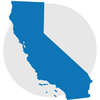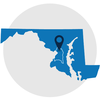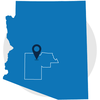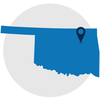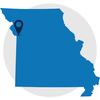Many state and local governments have used money from the State and Local Fiscal Recovery Fund (SLFRF) to expand the number of beds in shelters and support services, and create new programs to address the growing problem of homelessness. Read on to see how two states, two counties, and two cities are using these funds to address the challenges people experiencing homelessness face.
California
Program: The Homekey program is designed to provide permanent housing for more than 160,000 homeless individuals across the state and to add more than 10,000 permanent housing units over the next few years.
Total SLFRF funding to California: $27 billion
Total program cost: $2.2 billion
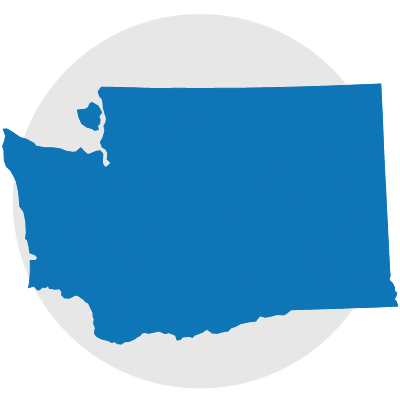
Washington
Program: The Housing and Essential Needs (HEN) program will pay the rent for those who are unable to work due to medical or mental health disabilities and, as a result, face homelessness.
Total SLFRF funding to Washington: $4.4 billion
Program cost: $2.6 billion
Prince George's County, Maryland
Program: The county will use SLFRF money to pay for a new facility for the Warm Nights program that will add up to 65 emergency shelter beds. The facility, which will be owned and operated by the county, will also provide support services, case management, and rehousing resources.
Total SLFRF funding to Prince George's County: $176.6 million
Program cost: $5 million
Maricopa County, Arizona
Program: The county is using SLFRF money to increase funding to several existing service providers who plan to use the money to add shelter beds.
Total SLFRF funding to Maricopa County: $871.2 million
Program cost: $10 million
Visit the county's American Rescue Plan Act spending dashboard.
Tulsa, Oklahoma
Program: The city is using SLFRF money to increase funding to a variety of nonprofit organizations that address homelessness. Family Promise of Tulsa County, which provides shelters and transitional housing to families, will receive most of the funding. The organization will use this money to purchase a new building that will house 13 more families.
Total SLFRF funding to Tulsa: $87.8 million
Program cost: $328,333
Kansas City, Missouri
Program: The Pallet community (VERGE) program will provide housing for up to 500 individuals for 90 days and then connect them to long-term housing solutions. The program also has caseworkers on-site 24/7 and provides residents with access to food, clothing, and healthcare services. In addition, the program delivers training to residents to prepare them for long-term housing.
Total SLFRF funding to Kansas City, MO.: $194.8 million
Program cost: $3 million
Learn More
For more background on our series about how local governments are spending federal money, read the introduction here.
Read the First in the Series on local government's Pilot Programs to address issues arising during the pandemic.
Visit our SLFRF Interactive dashboard to see all the State and Local Fiscal Recovery Fund data.


